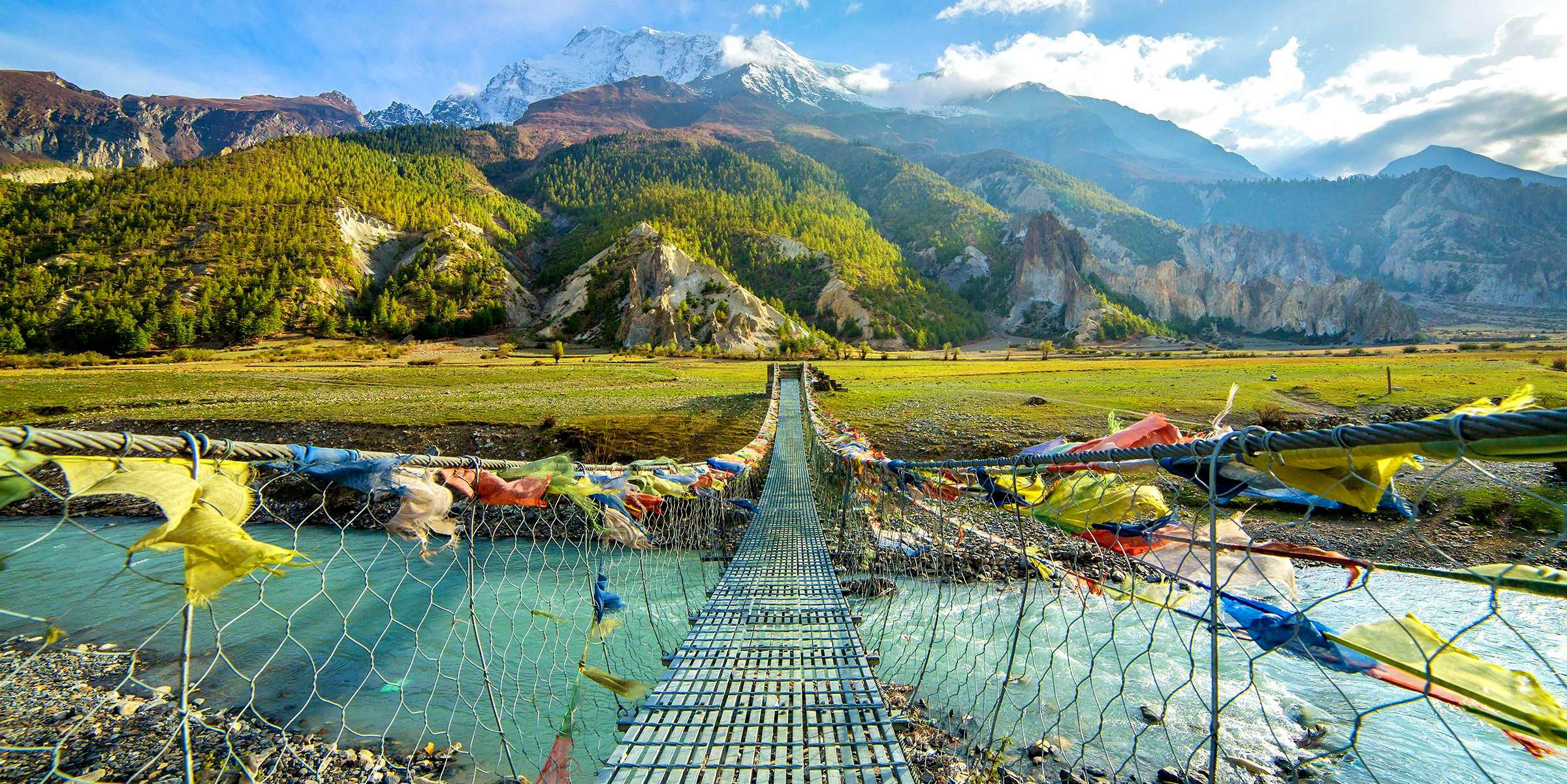Kathmandu Valley
Kathmandu Valley, nestled in the heart of Nepal, is not only the political and economic center of the country but also a cultural hub that offers an unparalleled glimpse into Nepal’s rich heritage. The valley encompasses three major cities: Kathmandu, Patan, and Bhaktapur, each brimming with historic temples, palaces, and courtyards, along with bustling markets that display the vibrancy of Nepali life.
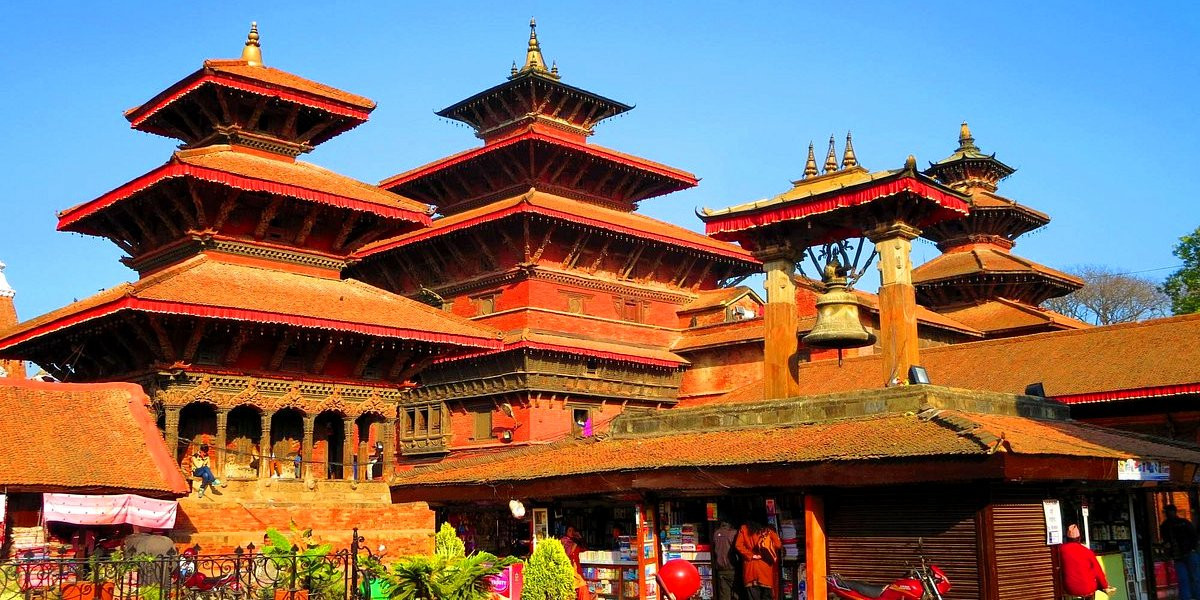
Key Attractions in Kathmandu Valley
-
Kathmandu Durbar Square: At the core of Kathmandu city, this historic square features a royal palace and a cluster of ancient temples that showcase exquisite Nepalese art and architecture. It's a UNESCO World Heritage site, frequented by both tourists and locals for its historical significance and vibrant atmosphere.
-
Patan Durbar Square: Located in Lalitpur, just across the Bagmati River from Kathmandu, this square is famous for its intricately carved stone and woodwork. Patan, known as the city of artisans, offers an insight into the valley's rich crafts and traditions.
-
Bhaktapur Durbar Square: This well-preserved square is renowned for its architectural beauty, including the Nyatapola Temple, Bhaktapur's tallest pagoda, and the 55-Window Palace. Bhaktapur provides a more laid-back experience compared to its sister cities and is famous for its yogurt, pottery, and traditional festivals.
-
Swayambhunath Stupa (Monkey Temple): Perched on a hilltop and accessible by a long stairway, this stupa is one of the most ancient and holy sites in the valley. It offers a panoramic view of the city and is known for the monkeys that inhabit the surrounding area.
-
Pashupatinath Temple: One of the most sacred Hindu temples of Shiva in the world, located on the banks of the Bagmati River. While non-Hindus are not allowed inside the temple, visitors can observe the rituals and cremations from across the river.
-
Boudhanath Stupa: One of the largest stupas in the world, it serves as a focal point for Tibetan Buddhism in Nepal. The area around Boudhanath is also home to many Tibetan refugees and is vibrant with monasteries and Tibetan shops.
- Cultural and Lifestyle Aspects: The Kathmandu Valley is not just about sightseeing; it's about experiencing the bustling local life, the colorful festivals, and the culinary delights. The valley celebrates numerous festivals with great fervor, with Indra Jatra and Dashain being some of the most significant. The local cuisine, characterized by Newari and Tibetan influences, offers a variety of unique flavors, from momos (dumplings) to bara (lentil pancakes).
Visiting the Kathmandu Valley is like stepping into a live museum of human history framed by the breathtaking backdrop of the Himalayas. It's a place where ancient traditions seamlessly blend with modern life, offering a vibrant and unforgettable experience. Whether you're exploring its ancient sites, participating in a festival, or just wandering through its lively streets, Kathmandu Valley captures the essence of Nepalese culture and history.
Pokhara
Pokhara is a remarkable city in Nepal, celebrated for its stunning natural beauty and relaxed atmosphere, making it a favorite destination for both domestic and international travelers. Nestled alongside the serene Phewa Lake and overshadowed by the magnificent Annapurna range, Pokhara offers a blend of adventure and tranquility that is hard to find elsewhere.
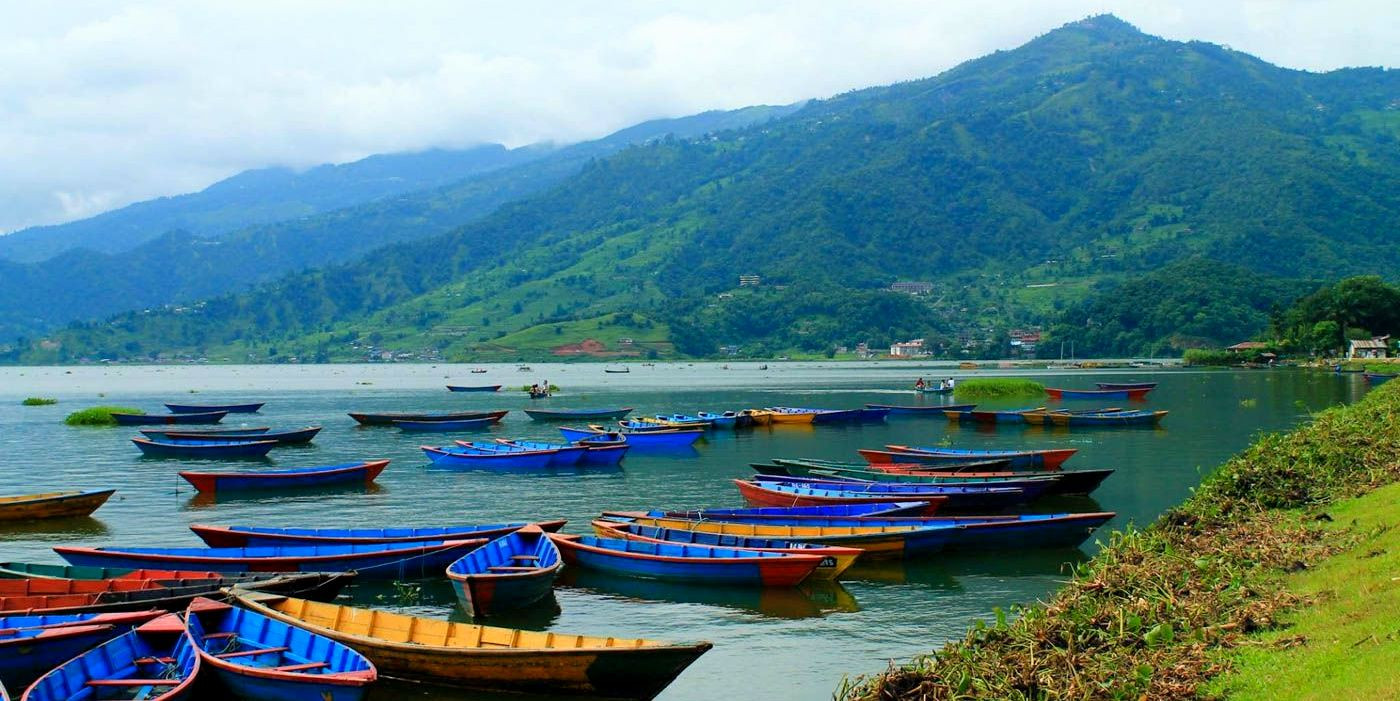
Key Attractions in Pokhara
-
Phewa Lake: The second largest lake in Nepal, Phewa Lake is the center of life in Pokhara. Visitors can enjoy boating, kayaking, or just relaxing along its shores. The lake is also famous for the stunning reflection of the Machhapuchhre mountain in its waters and the picturesque Tal Barahi Temple situated on an island in the lake.
-
World Peace Pagoda: Built atop a hill overlooking the city, the World Peace Pagoda offers panoramic views of Pokhara and the surrounding mountains. It is a beautiful white structure symbolizing peace, and the trek to reach it is as rewarding as the destination itself.
-
Sarangkot: The perfect spot for watching sunrise and sunset over the Himalayas, Sarangkot is also renowned for adventure sports. Paragliding from Sarangkot, with the city below and the mountains in the background, is an unforgettable experience.
-
Davis Falls: A unique waterfall that flows directly into a deep and narrow canal which has no end in sight, Davis Falls is another must-visit in Pokhara. The area around the falls has parks and a small market, making it a pleasant place for an afternoon.
-
Gupteshwor Mahadev Cave: Located just across from Davis Falls, this cave contains a revered Shiva temple and offers a glimpse into the geological wonders of the area.
-
Adventure Sports and Activities: Paragliding, Zip-lining,Bungee jumping, Mountain biking
-
Trekking: Being the gateway to the Annapurna Circuit, Pokhara serves as the starting point for numerous treks in the Annapurna region.
-
Cultural Insights: The city also holds a rich cultural tapestry with a blend of various ethnic groups, including the Gurung, Magar, and Thakali communities. This diversity is reflected in the local festivals, food, and daily life. Pokhara’s Tibetan refugee settlement further adds to this cultural mix, where visitors can learn about Tibetan crafts, culture, and religion.
-
Culinary Experience: Pokhara’s culinary scene offers everything from traditional Nepalese dishes to international cuisine. The lakeside area, in particular, is lined with cafes and restaurants that provide not only good food but also great views of the lake and mountains.
Whether you're looking for adventure, relaxation, or cultural immersion, Pokhara has it all. Its serene environment, coupled with the backdrop of snow-capped mountains and an array of activities, makes Pokhara a place where every traveler can find something to enjoy. It’s not just a city; it’s a starting point for exploration, adventure, and experiencing the natural wonders of Nepal.
Chitwan National Park
Chitwan National Park stands out as one of the greatest wildlife reserves in Asia, showcasing a diverse ecosystem that includes forests, marshland, and grassy plains. Situated in the Terai lowlands of Nepal, it has been a UNESCO World Heritage Site since 1984, famed for its biodiversity and effective conservation efforts. Chitwan offers an authentic adventure into the wilderness, providing shelter to some of the most unique wildlife in the world.
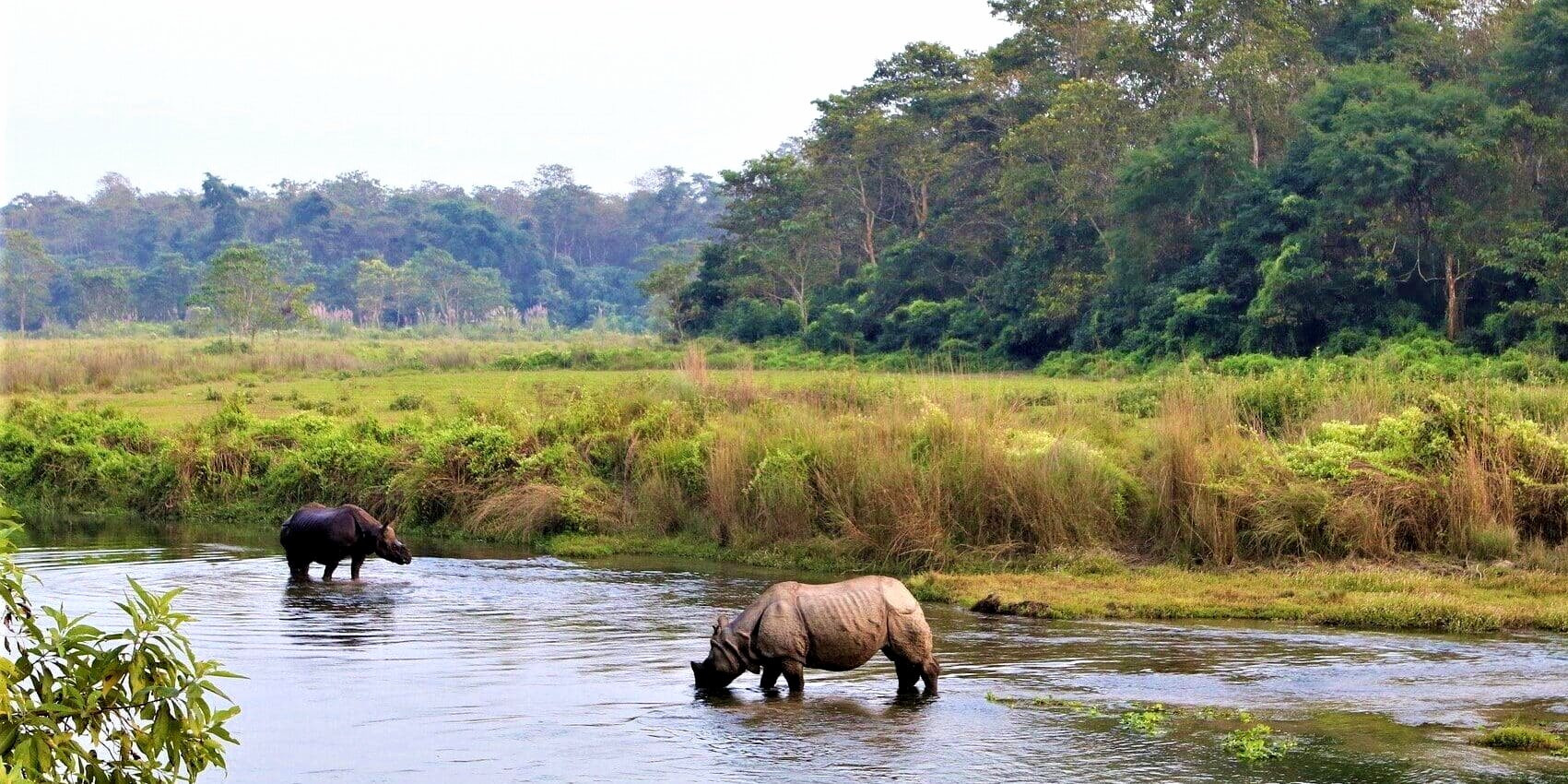
Key Attractions in Chitwan National Park
-
Wildlife Safaris: Chitwan’s most popular activity is the wildlife safari, which can be enjoyed on an elephant's back, in a jeep, or even from a canoe. These safaris offer the chance to spot rare species such as the one-horned rhinoceros, Bengal tigers, and Asiatic elephants.
-
Bird Watching: With over 550 species of birds, including several migratory species, Chitwan is a paradise for bird watchers. The best times for bird watching are early morning or late afternoon when the birds are most active.
-
Canoeing: A canoe trip along the Rapti or Narayani River provides a different perspective on the park’s rich ecosystems and is also an excellent opportunity for sighting crocodiles and water birds.
-
Cultural Tours: Visitors can also engage with the local Tharu community, known for their unique culture and traditional lifestyles. Cultural tours include village walks, traditional dances, and the chance to see the distinctive stilt houses of the Tharu.
-
Nature Walks and Jungle Treks: Guided nature walks and jungle treks are available, allowing visitors to explore the park’s diverse flora and fauna on foot. These walks offer a closer look at the smaller creatures and plant life not easily spotted from a safari vehicle.
-
Conservation Efforts: Chitwan National Park is a testament to successful wildlife conservation in Nepal. It plays a crucial role in the preservation of several endangered species, notably the Greater One-horned Rhinoceros and the Bengal Tiger. The park’s efforts have seen a significant rebound in the populations of these and other species, which continue to thrive in this protected environment.
-
Experiencing Chitwan National Park: Visiting Chitwan provides more than just the excitement of spotting wildlife. It offers a comprehensive experience that includes adventure, relaxation by the riverbanks, and immersion into the local culture. The park is equipped with a range of accommodations, from luxury lodges to budget guesthouses, ensuring that all visitors can enjoy their stay comfortably and conveniently.
Chitwan National Park is not just a highlight of Nepal tourism; it is a vital part of global conservation efforts. Its rich biodiversity and successful preservation programs make it a must-visit for nature lovers, wildlife enthusiasts, and eco-tourists. Whether you’re cruising down a river, trekking through the jungle, or sitting back on a safari, Chitwan offers an unforgettable adventure into the heart of Nepal’s natural world.
Lumbini
Lumbini is a profound and spiritually significant destination located in the Terai plains of Nepal, recognized worldwide as the birthplace of Lord Buddha, Siddhartha Gautama. This sacred site not only holds immense religious value for Buddhists but also offers rich archaeological and historical insights, making it a pivotal stop in Nepal's cultural and spiritual tourism.
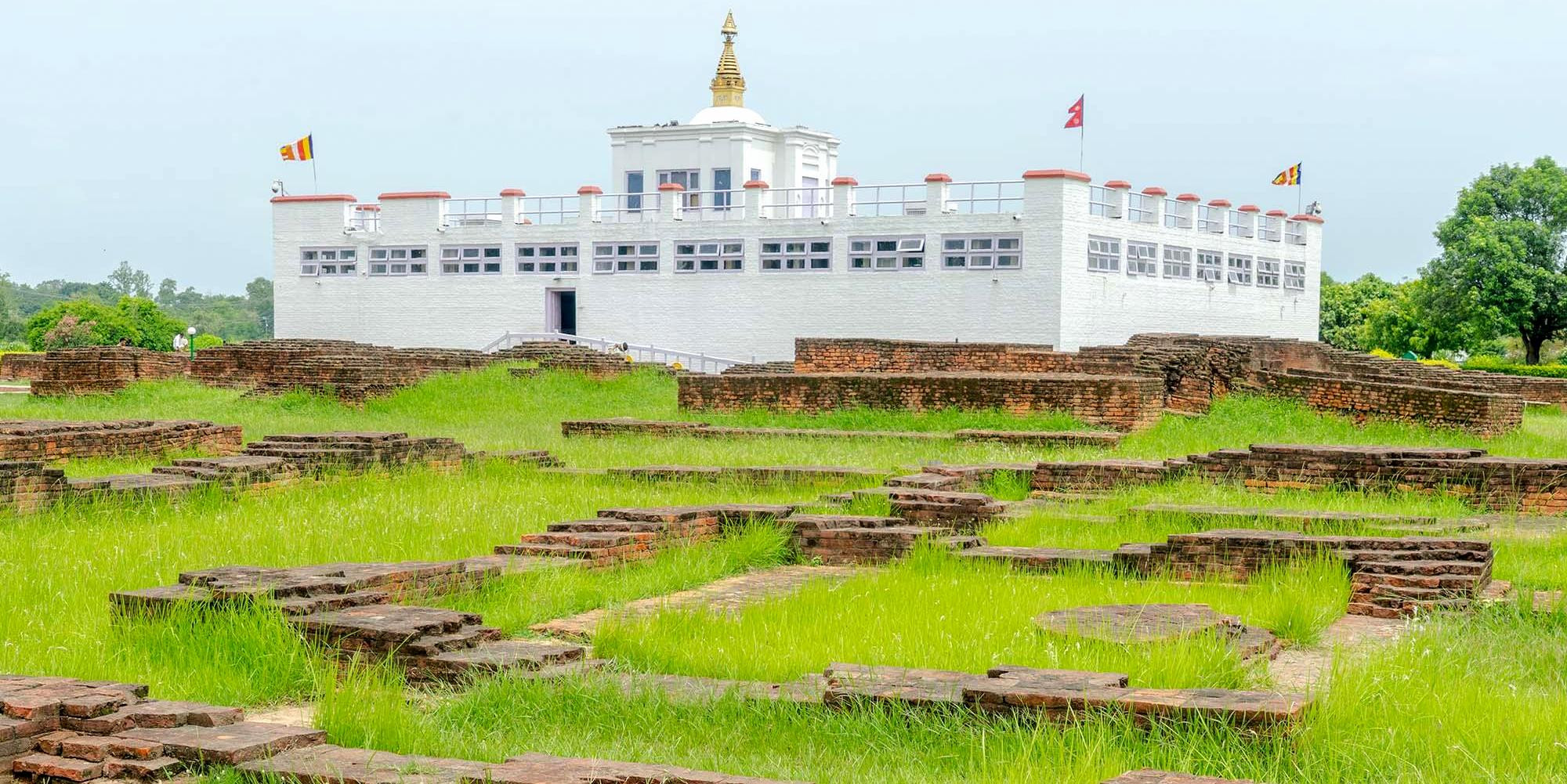
Key Attractions in Lumbini
-
Mayadevi Temple: Central to Lumbini, this temple is believed to be the precise location where Queen Mayadevi gave birth to Siddhartha Gautama. Inside, visitors can view the marker stone, the exact spot of the birth, and ancient ruins that date back to the time of Buddha.
-
Ashoka Pillar: Erected by Emperor Ashoka in 249 BC, this pillar commemorates his pilgrimage to the birthplace of Buddha. The inscription on the pillar serves as one of the earliest epigraphic evidences of Buddha’s life and the monastic institution.
-
Monastic Zone: The area is divided into the Eastern and Western Monastic Zones. The Eastern Zone contains Theravadin monasteries, whereas the Western Zone houses Mahayana and Vajrayana monasteries. Each zone showcases unique architectural designs reflecting different Buddhist traditions from around the world.
-
Lumbini Museum: This museum houses an extensive collection of religious manuscripts, artifacts, and relics associated with Buddhist history and practices from Lumbini and the surrounding region.
-
World Peace Pagoda: This gleaming white structure built by Japanese Buddhists is one of many peace pagodas around the world aimed at inspiring peace for all beings. It offers a tranquil space for meditation and contemplation.
-
Cultural and Spiritual Experience: Lumbini is not just a place of historical interest; it's a vibrant centre for pilgrimage. Visitors from around the globe come here to delve into the life of the Buddha and experience the teachings of peace and compassion. The site includes over 25 international Buddhist monasteries, reflecting the global influence and universal message of Buddhism.
-
Festivals and Events: Significant Buddhist festivals such as Buddha Jayanti (the Buddha's birthday) are celebrated with great enthusiasm in Lumbini. These occasions are marked by prayer, meditation, ritual chanting, and colorful processions, offering visitors a deeper understanding of the practices and the community's devotion.
-
Environmental and Development Efforts: Lumbini is undergoing significant development to improve facilities for pilgrims and tourists, including better accommodation and transportation. These efforts are balanced with a strong emphasis on preserving the sanctity and ecological integrity of the area.
Lumbini is more than just a travel destination; it's a journey back to the origins of one of the world's oldest religions and a chance to reflect on its teachings. Whether you are a follower of Buddhism, a student of history, or simply a seeker of peace, Lumbini offers a unique and profound experience that resonates with the spirit of enlightenment and tranquility.
Annapurna Region
Annapurna Region stands out as one of the most popular and spectacular trekking destinations in Nepal, renowned for its stunning landscapes, diverse ecosystems, and vibrant cultural expressions. The region, named after the Annapurna Massif, encompasses a vast area in North-Central Nepal, including several peaks over 7,000 meters and the 10th highest peak in the world, Annapurna I.
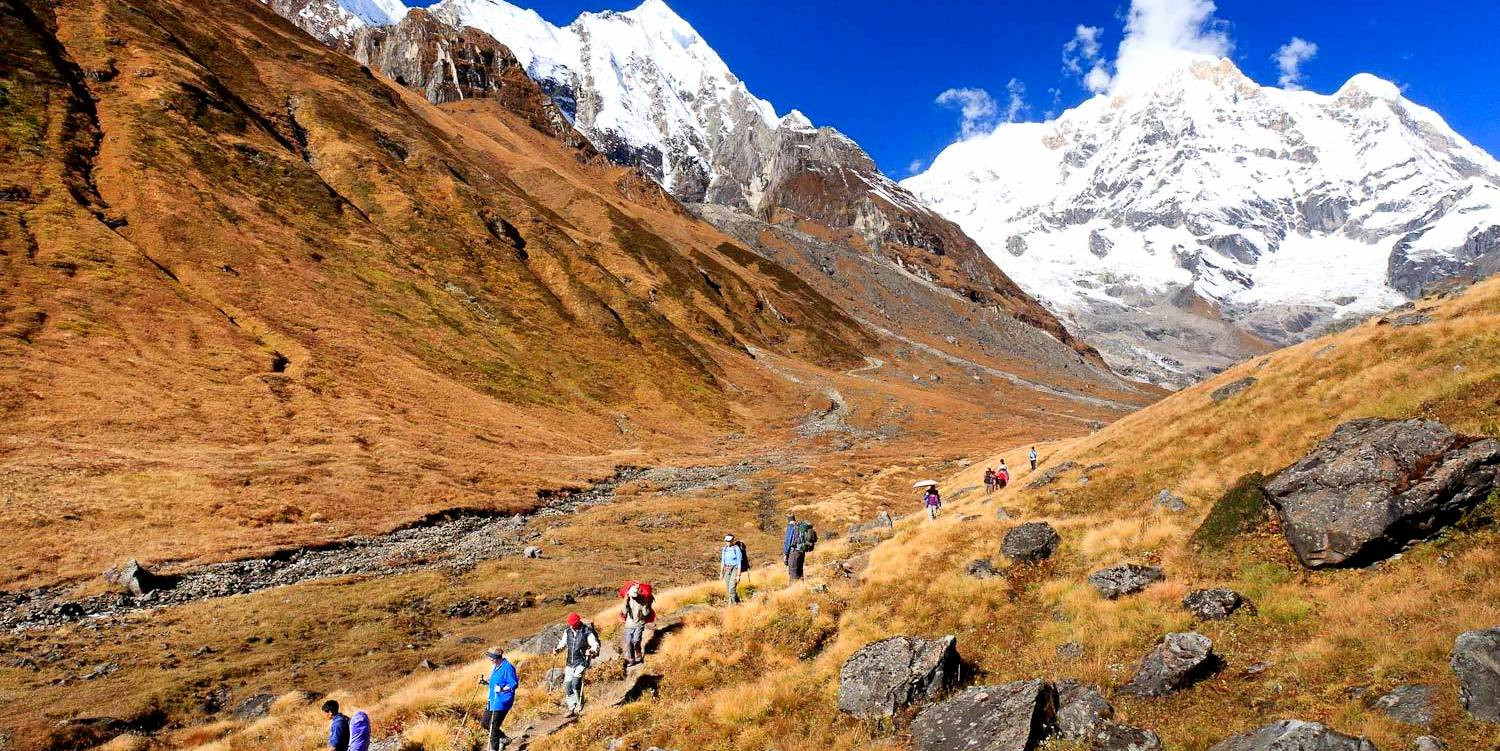
Key Attractions in the Annapurna Region
-
Annapurna Circuit: This classic trek circles the entire Annapurna massif, offering trekkers an incredibly varied landscape, from the lush subtropical forests in the lower reaches to the high, arid, Tibetan-like plateaus in the north. The circuit takes about 15-20 days to complete and is known for the dramatic change in scenery and culture along the way.
-
Annapurna Base Camp (ABC): Known as the Annapurna Sanctuary, this trek is shorter but no less stunning, leading to the base camp at 4,130 meters. The path offers breathtaking views of several high peaks, including Annapurna I, Annapurna South, and Machapuchare (Fishtail Mountain).
-
Poon Hill: Perfect for those looking for a shorter trek, Poon Hill provides panoramic views of the entire Annapurna range. The sunrise from Poon Hill is famed for its spectacular display of changing colors over the Himalayas.
-
Jomsom Muktinath Trek: This trek is part of the Annapurna Circuit but can be done separately, focusing on the deeper, arid valleys with a backdrop of high peaks. It features important religious sites like Muktinath, a sacred place for both Hindus and Buddhists.
-
Manang and Mustang: These districts offer a glimpse into the traditional lifestyle of the Tibetan-like cultures of Nepal’s high altitudes, with their distinctive architecture, language, and customs.
-
Trekking Experience and Activities: The Annapurna Region is known for its accessibility, with treks varying from a few days to several weeks, fitting both novice trekkers and seasoned mountaineers. The trails lead through diverse terrains, from rice paddies and subtropical forests to alpine environments and arid plateaus, featuring hot springs, ancient temples, and unique wildlife.
-
Cultural Insight: The region is home to various ethnic groups, including Gurungs, Manangis, and Thakalis, offering trekkers a profound cultural experience. Many villages along the trekking routes provide homestays that allow visitors to immerse themselves in local customs, cuisine, and daily life.
- Conservation and Tourism: The Annapurna Conservation Area Project (ACAP), the first and largest conservation area in Nepal, plays a crucial role in sustainable tourism. ACAP's efforts ensure that tourism benefits the local communities and conserves the natural environment.
Whether you are trekking the full circuit, making the pilgrimage to Muktinath, or exploring the base camp, the Annapurna Region offers a compelling blend of natural beauty, cultural richness, and adventure. Its well-maintained trails, stunning vistas, and welcoming villages make it a must-visit destination for anyone looking to explore the Himalayas.
Everest Region
The Everest Region, also known as the Khumbu region, is one of the most famous and awe-inspiring trekking destinations in the world. Situated in northeastern Nepal, this region is not just home to Mount Everest, the highest peak on Earth, but also to a vibrant Sherpa culture, dramatic landscapes, and some of the most challenging and rewarding treks available.
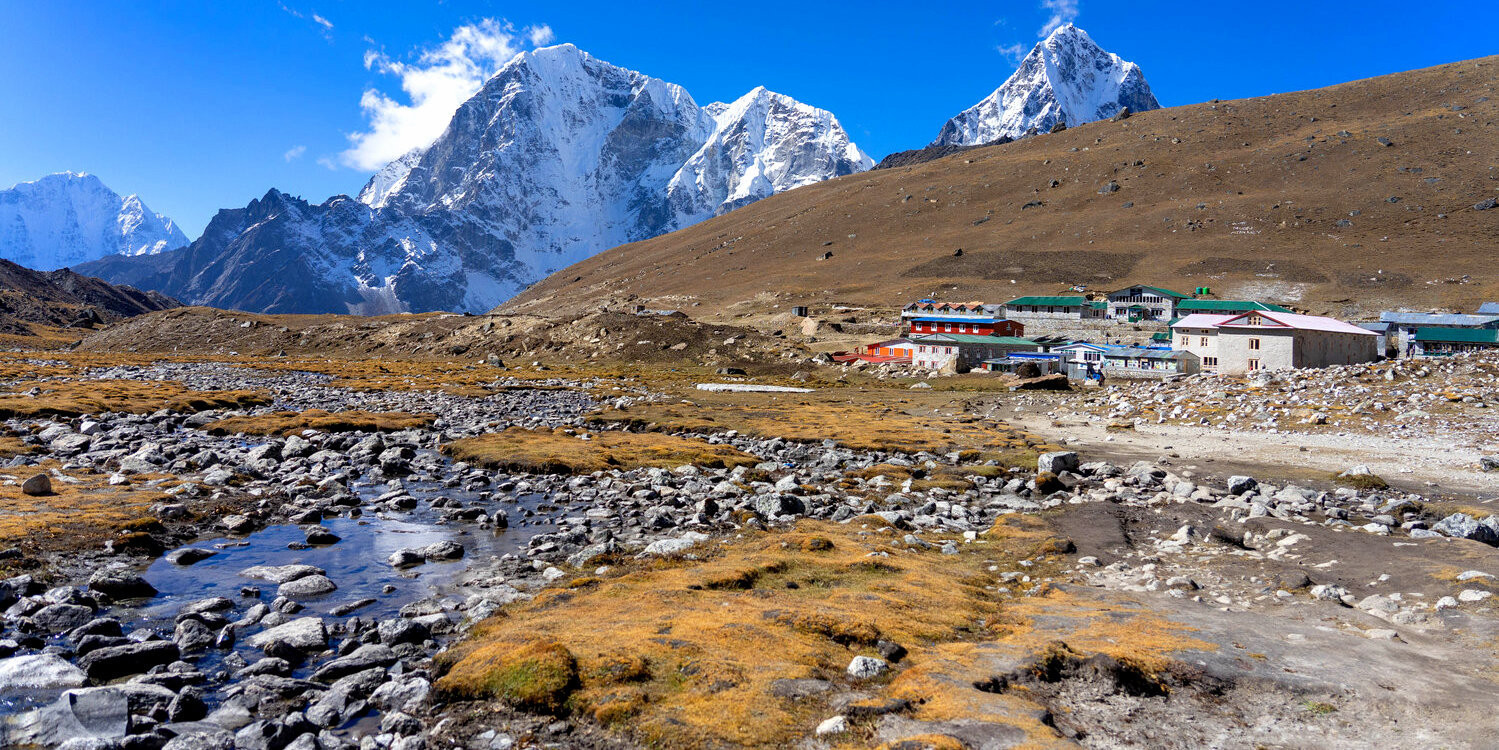
Key Attractions in the Everest Region
-
Everest Base Camp (EBC): The trek to Everest Base Camp is the highlight for most visitors, offering the opportunity to stand at the foot of the world's highest mountain. This trek provides breathtaking views of the Khumbu Icefall, Everest, and several other high peaks like Lhotse, Nuptse, and Ama Dablam.
-
Kala Patthar: Often combined with the EBC trek, Kala Patthar is a small peak that offers the best accessible point for viewing Everest, providing a dramatic close-up of the south face and the summit.
-
Gokyo Lakes and Gokyo Ri: A less frequented route than the base camp trek, the Gokyo Lakes trek offers stunning turquoise waters set against a backdrop of Himalayan peaks, with Gokyo Ri providing some of the best panoramic views in the region.
-
Three Passes Trek: For the more adventurous, the Three Passes Trek includes Renjo La, Cho La, and Kongma La, along with visits to EBC and Gokyo Lakes. It's considered one of the most comprehensive treks in the Everest Region, challenging but rewarding with its unparalleled mountain views.
-
Namche Bazaar: Known as the gateway to Everest, this bustling town is a hub for trekkers and climbers. It offers modern amenities mixed with traditional Sherpa culture and is an excellent place for acclimatization.
-
Trekking Experience and Challenges: Trekking in the Everest Region is both challenging and rewarding. Altitudes exceed 5,000 meters, demanding good physical health and proper acclimatization. The region's infrastructure for trekkers is well-developed, with a range of lodging from basic teahouses to more comfortable lodges.
-
Cultural Insights: The region is predominantly inhabited by the Sherpa community, known for their mountaineering prowess and deep-rooted Buddhist traditions. Monasteries like Tengboche and Pangboche are significant cultural sites, and festivals such as Mani Rimdu add vibrant color and activity to the region.
- Conservation and Impact: The Sagarmatha National Park, a UNESCO World Heritage site, encompasses much of the Everest Region. Conservation efforts are crucial to maintaining the region's ecology and supporting sustainable tourism practices that benefit local communities.
The Everest Region offers more than just trekking; it is a journey into the heart of the Himalayas, filled with cultural richness and natural grandeur. From awe-inspiring mountain vistas to the warmth of Sherpa hospitality, a visit to this part of Nepal is a profound experience that resonates with the spirit of adventure and exploration. Whether you aim to reach base camp, scale a challenging pass, or soak in the vibrant local culture, the Everest Region promises an unforgettable adventure.
Mustang
Mustang, often referred to as the "Last Forbidden Kingdom," is a remote and ancient region at the edge of the Tibetan plateau, offering a starkly beautiful landscape filled with rocky expanses and medieval villages. This part of Nepal, officially known as the Upper Mustang, was restricted to outsiders until 1992, which helped preserve its mystique and traditional Tibetan culture largely untouched by modern influences.
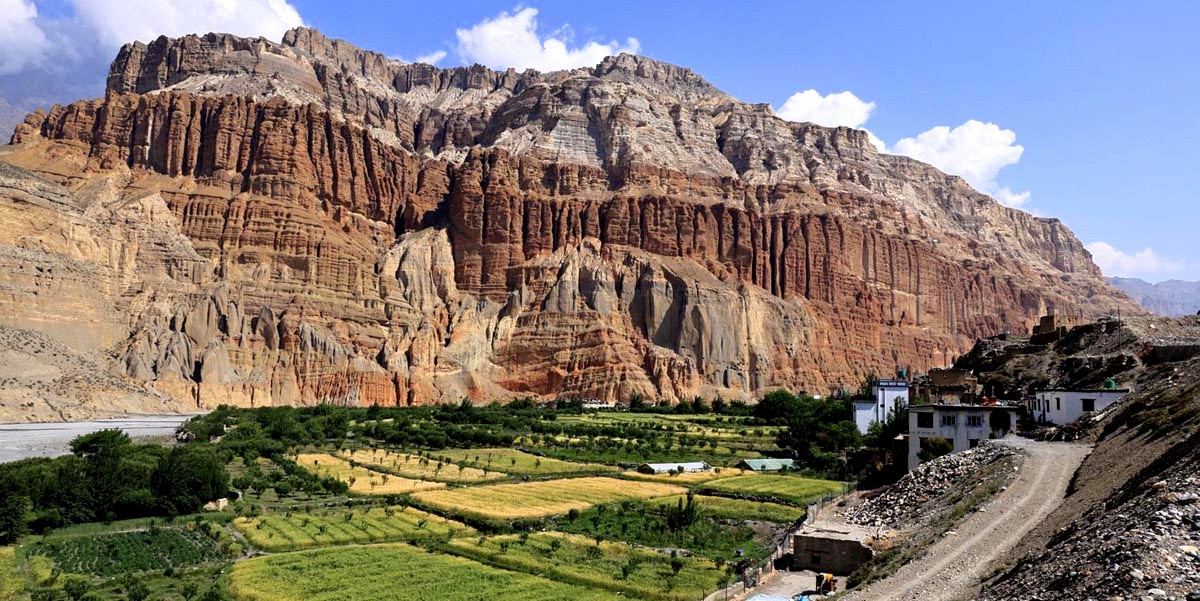
Key Attractions in Mustang
-
Lo Manthang: The walled capital city of the former Kingdom of Lo, Lo Manthang is an architectural wonder. This isolated town is filled with narrow alleys, old chortens, and centuries-old monasteries like Thubchen and Jampa Lhakhang. The city itself feels like a living museum, offering insights into a way of life that has remained unchanged for centuries.
-
Chhusang, Chele, and Kagbeni: These are just a few of the picturesque villages along the trekking route into Mustang. Each village offers unique cultural insights, ancient monasteries, and spectacular Tibetan architecture, with Kagbeni serving as the gateway to Upper Mustang.
-
The Sky Caves of Mustang: Over 10,000 man-made caves are dug into the hillsides and cliffs of northern Mustang. These mysterious caves, some of which are several stories high and stacked on top of each other, are believed to be over 3,000 years old and provide an archaeological enigma still not fully understood today.
-
Tiji Festival: Held annually in Lo Manthang, this three-day religious festival is centered on a ritual known as "The Chasing of the Demons." Tiji consists of Tibetan rituals that celebrate the myth of a son who had to save the Mustang kingdom from destruction. It's a colorful festival that attracts tourists and photographers from around the world.
-
Trekking Experience and Terrain: Trekking in Mustang is markedly different from the lush green trails found elsewhere in Nepal. The landscape here is a dramatic desert with deep ravines and rock shelves, flanked by snowy peaks. A journey into Mustang is more akin to trekking in the high deserts of the Tibetan Plateau, offering both physical and spiritual solace.
-
Cultural Insights: Mustang is predominantly Tibetan Buddhist, and the region is dotted with ancient shrines, prayer walls, and hidden monasteries that contribute to its mystical feel. The local culture is a direct descendant of Tibetan culture, and as such, Mustang is one of the best places in the world to experience authentic Tibetan traditions.
-
Permits and Accessibility: Due to its sensitive location near the Nepali border with Tibet, special trekking permits are required to visit Upper Mustang. These regulations help preserve the ecological balance and cultural integrity of the region.
Mustang offers an unparalleled journey into a part of the world that has preserved its unique cultural heritage and landscape in the face of modernity. For those looking for solitude, breathtaking landscapes, and a deep cultural experience, Mustang is a treasure waiting to be explored. This remote area promises adventure, insight, and a peek into a way of life unchanged for centuries, making it a truly unique destination within Nepal.
Langtang Valley
Langtang Valley is a serene and captivating region in Nepal, less frequented by tourists compared to the Everest and Annapurna regions, yet offers a similarly spectacular Himalayan experience. Nestled north of Kathmandu, near the Tibetan border, Langtang Valley presents a fantastic trekking opportunity characterized by its accessibility, diverse landscapes, and rich cultural heritage.
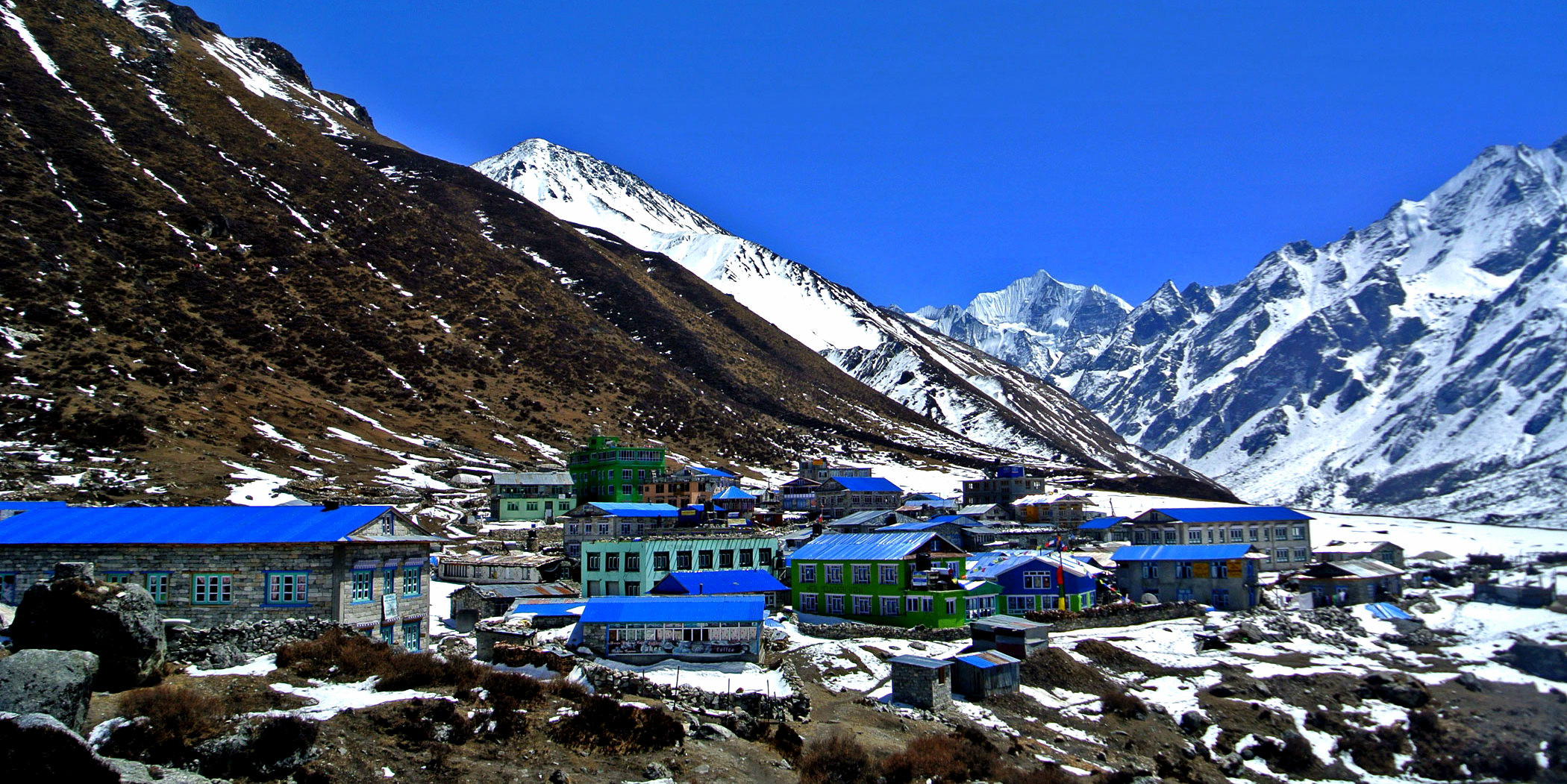
Key Attractions in Langtang Valley
-
Langtang Village: Before the devastating earthquake in 2015, Langtang Village was a thriving community set in the heart of the valley. The village has been rebuilt and continues to offer a warm welcome to trekkers, serving as a poignant reminder of the resilience of the local people.
-
Kyanjin Gompa: Situated at an altitude of 3,870 meters, this small village is the usual turnaround point for many treks in the valley. It is home to an ancient monastery and a cheese factory, both popular with visitors. The area provides breathtaking views of Langtang Lirung and the surrounding peaks.
-
Tserko Ri: For those willing to extend their trek, a hike to Tserko Ri (5,000 meters) offers some of the best panoramic views in the region. This point allows for unobstructed views of the Himalayan peaks at sunrise and sunset.
-
Langtang National Park: The valley is part of Langtang National Park, which hosts a variety of flora and fauna unique to the region. The park is home to the endangered red panda and offers a chance to see other wildlife such as Himalayan black bears, langur monkeys, and wild boars.
-
Trekking Experience and Terrain: The trek to Langtang Valley is known for its diversity, passing through lush forested areas that open up into wide alpine meadows. The trail follows the Langtang River and passes through ethnic Tamang villages, where trekkers can experience firsthand the local lifestyle and culture. The trek can be completed in about 7 to 9 days, making it an excellent option for those who have limited time but still want to experience the unique beauty of the Himalayas.
-
Cultural Insights: The region is predominantly inhabited by the Tamang community, who share cultural ties with Tibetan traditions. Their lifestyle, language, and crafts offer trekkers a deep dive into Himalayan culture. The hospitality found in the guesthouses and villages along the way adds to the richness of the trekking experience.
-
Environmental and Ecological Aspects: Langtang National Park plays a crucial role in the conservation of the local ecology. Efforts are continuously made to maintain the trails and protect the natural habitat, ensuring that tourism has a minimal environmental impact.
Langtang Valley offers a tranquil yet adventurous trekking experience, set against the backdrop of majestic mountains and enriched by a strong cultural heritage. It's a perfect destination for those looking to explore less-trodden paths without venturing too far from Kathmandu. The combination of natural beauty, cultural richness, and ease of access makes Langtang Valley a must-visit location for anyone interested in experiencing the Himalayas in a more intimate setting.
Ilam
Ilam is a picturesque district in eastern Nepal, renowned for its lush landscapes, rolling hills, and the extensive tea gardens that carpet the region. Often referred to as the "Queen of Hills," Ilam offers a refreshing escape from the city's hustle and bustle, presenting visitors with a serene environment and a taste of Nepal’s rich agricultural heritage.
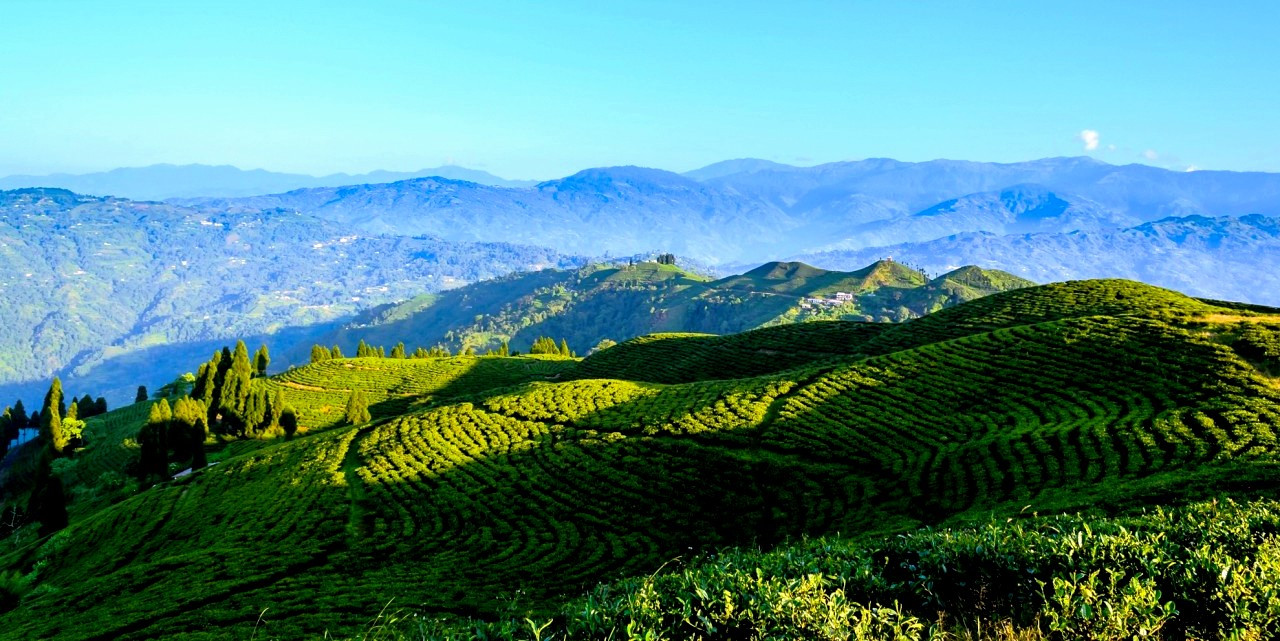
Key Attractions in Ilam
-
Tea Gardens: Ilam is famous for its tea, which is considered among the best in Nepal. The hills of Ilam are covered with tea bushes, with the Antu Danda, Kanyam, and Fikkal areas being particularly popular for both their scenic beauty and their expansive tea estates. Visitors can tour these gardens, learn about the tea-making process, and enjoy fresh tea directly from the source.
-
Mai Pokhari: This natural lake is a significant attraction in Ilam, revered as a sacred site. Surrounded by dense forests, it is home to a variety of flora and fauna, including rare and endangered species, making it a great spot for nature lovers and spiritual seekers.
-
Antu Danda: Known for its stunning views of the sunrise and sunset over the Himalayas, including Mount Everest and Kanchenjunga, Antu Danda is one of the highest hills in Ilam. It also offers panoramic views of the surrounding tea gardens and the plains of the Terai.
-
Ilam Bazaar: The main town of Ilam is a vibrant place to explore the local culture and cuisine. The bazaar is bustling with shops selling local handicrafts, traditional Nepalese attire, and, of course, various types of locally produced tea.
-
Gajur Mukhi: This is an interesting religious and historical site on the banks of the Deumai River. It features a stone archway and a cave system with religious significance, making it a point of interest for both history buffs and spiritual visitors.
-
Activities and Experiences: Ilam offers a range of activities that cater to different interests. For nature enthusiasts, there are numerous hiking and trekking trails that wind through the emerald tea gardens and verdant landscapes. Bird watching is another popular activity, given the diverse avian population supported by the region’s ecosystems.
-
Cultural Insights: Ilam’s population is a mix of different ethnic groups, including the Lepchas, Limbus, Rais, and Sherpas, each contributing to the district's cultural diversity. Festivals, local dances, and traditional music are an integral part of community life, providing a colorful tapestry of cultural expressions for visitors to witness and participate in.
-
Environmental Significance: The region is not only a major contributor to Nepal’s tea industry but also plays a crucial role in biodiversity conservation. Efforts are continually made to preserve the natural beauty and ecological balance of Ilam, making it a model of sustainable tourism.
Ilam offers a unique blend of natural beauty, cultural richness, and tranquility, making it a must-visit destination for those seeking to explore the greener, more serene side of Nepal. Whether you're a tea enthusiast, nature lover, or cultural explorer, Ilam provides a refreshing and enriching experience away from the more frequented tourist paths.
Rara Lake
Rara Lake is a hidden gem nestled in the remote northwestern part of Nepal within Rara National Park. Known as the biggest and deepest freshwater lake in the Nepalese Himalayas, Rara Lake is celebrated for its stunning turquoise waters and the picturesque landscapes that surround it. The lake's pristine environment and relatively untouched surroundings make it an ideal destination for those seeking tranquility and a deep connection with nature.
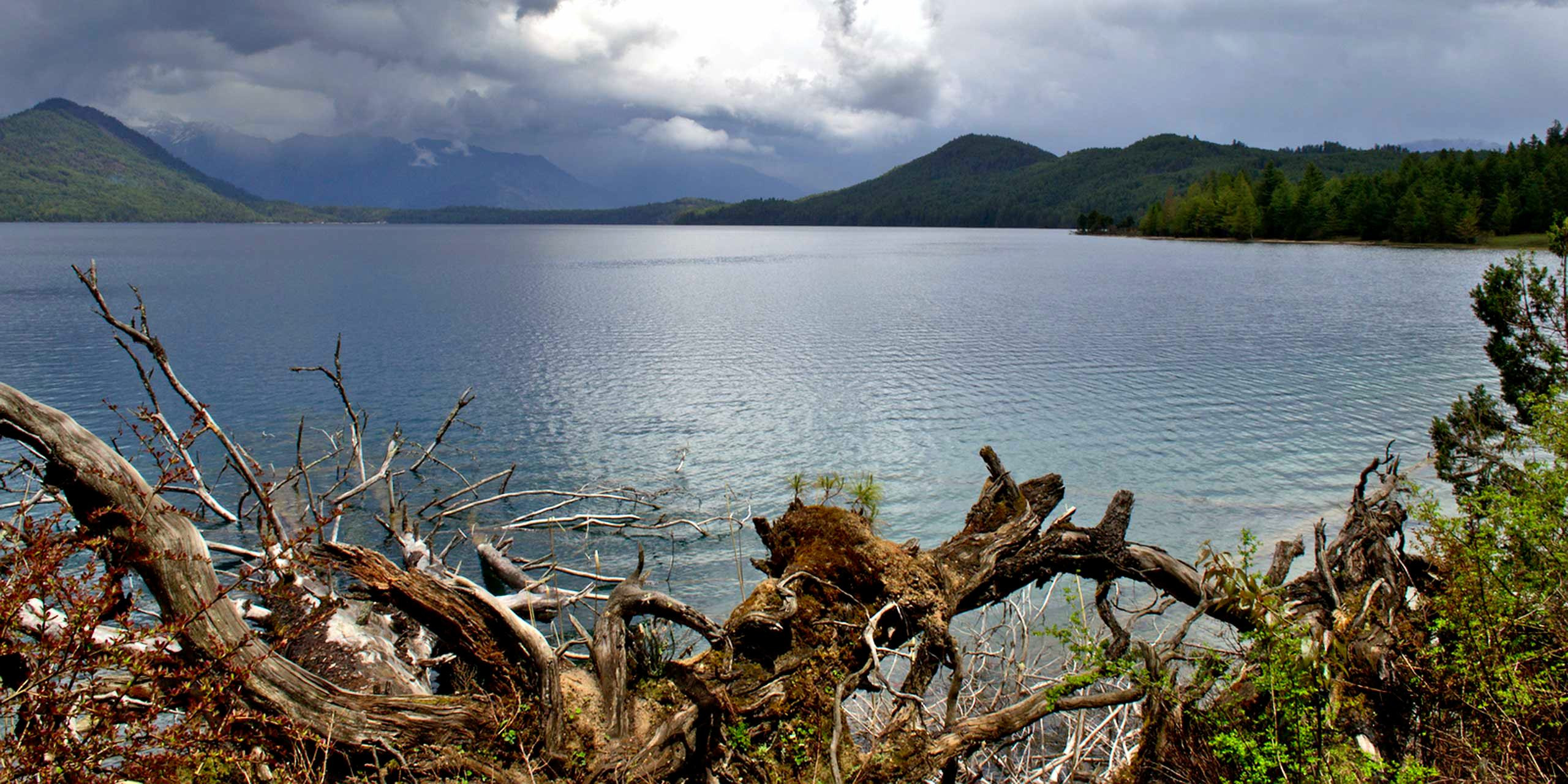
Key Attractions at Rara Lake
-
The Lake Itself: Rara Lake is the focal point of the park, with its mesmerizing blue waters that reflect the surrounding snow-capped peaks. It covers an area of almost 11 square kilometers at an altitude of about 2,990 meters. The lake is a haven for photographers and nature lovers who are drawn to its scenic beauty and serene atmosphere.
-
Rara National Park: Surrounding the lake, Rara National Park offers a sanctuary for wildlife. It is home to species such as the Himalayan black bear, musk deer, red panda, and various bird species, including the Himalayan monal (Nepal’s national bird). The park's diverse ecosystems range from coniferous forests to alpine meadows, providing excellent opportunities for nature walks and wildlife spotting.
-
Trekking: Trekking to Rara Lake is an adventure of its own, with routes that pass through remote villages and offer spectacular views of the Karnali region. The trek allows visitors to experience the local culture and lifestyle of the communities living in this isolated part of Nepal.
-
Boating and Fishing: Visitors can enjoy boating on the tranquil waters of Rara Lake, providing a different perspective of the lake and its surroundings. Fishing is another activity that can be enjoyed here, although permits are required to ensure the conservation of aquatic life.
-
Bird Watching: The area around Rara Lake is a bird watcher’s paradise, hosting many migratory and native birds. The serene environment and the rich biodiversity make it an ideal spot for bird watching, especially during the migratory seasons.
-
Cultural Insights: The region around Rara Lake is sparsely populated, primarily inhabited by communities such as the Thakuris and the Jumli people, who maintain a lifestyle that has remained largely unchanged over the centuries. Visitors have the opportunity to learn about the local customs and traditions, which are deeply intertwined with nature and the rugged landscape.
-
Environmental and Conservation Efforts: Rara National Park plays a critical role in the conservation of the lake and its surroundings. Efforts are continuously made to preserve this unique ecosystem, and tourism activities are carefully managed to minimize environmental impact. The park’s entry fees and regulations aim to support conservation while allowing visitors to enjoy the area responsibly.
Rara Lake offers a blend of extraordinary natural beauty, diverse wildlife, and cultural richness, making it a perfect destination for those looking to escape the more commercialized tourist spots of Nepal. The journey to Rara Lake is as rewarding as the destination itself, providing a profound sense of peace and solitude that is rare in today's fast-paced world. For adventurers and nature lovers, a visit to Rara Lake is a must, promising an unforgettable experience in one of Nepal’s most pristine environments.
Tips for Must visit Places in Nepal
Visiting Nepal's must-see destinations can be an enriching and unforgettable experience. To make the most of your trip, here are some essential tips for traveling to and exploring these iconic places:
-
Choose the Right Season: Nepal has distinct seasons, and the best time to visit depends largely on what you plan to do. For trekking, the pre-monsoon months of March to May and the post-monsoon months of September to November offer the clearest skies and the most temperate weather. For cultural visits, almost any time of year is suitable, though festivals like Dashain (September-October) and Tihar (October-November) can offer unique cultural insights.
-
Acclimatize Properly: When trekking in high-altitude areas like the Everest or Annapurna regions, take time to acclimatize to avoid altitude sickness. Plan your itinerary to include days for acclimatization, particularly if you are ascending above 3,000 meters.
-
Respect Local Customs: Nepal is a country with deep religious traditions and various cultural etiquettes. Dress modestly, especially when visiting temples and monasteries. Always ask for permission before taking photographs of people or religious sites.
-
Stay Safe: While Nepal is generally a safe destination, it's important to take general safety precautions. Keep your valuables secure, be aware of your surroundings, and use reputable travel companies, especially for adventure activities like trekking and rafting.
-
Travel Insurance: Always travel with insurance that covers medical emergencies, including evacuation. This is crucial for trekking expeditions, where the remote nature of the locations makes medical facilities inaccessible.
-
Pack Appropriately: Depending on where and when you are visiting, your packing list may vary. For high-altitude treks, ensure you have warm clothing, a good quality sleeping bag, and sturdy trekking boots. For lower altitudes, lightweight clothing and a good rain jacket might be necessary.
-
Try Local Cuisine: Nepali food is diverse and flavorful. Don’t miss out on dishes like dal bhat (lentil soup and rice), momo (dumplings), and other regional specialties. Always ensure to eat at clean and reputable places to avoid stomach ailments.
-
Learn Basic Nepali Phrases: While English is widely spoken in tourist areas, learning a few phrases in Nepali can enhance your experience and help you connect with locals.
-
Stay Eco-Friendly: Preserve the natural beauty of Nepal by minimizing your environmental impact. Dispose of waste properly, use water sparingly, and avoid single-use plastics.
-
Plan Ahead for Remote Areas: Some parts of Nepal, such as Mustang or Rara Lake, are remote and require special permits and arrangements. Plan these trips with a reputable agency to ensure you have the necessary permissions and logistics in place.
Following these tips will help ensure a smooth, enjoyable, and respectful visit to Nepal's stunning landscapes and vibrant cultures.
Ideal Time for Must visit Places in Nepal
To fully enjoy the diverse attractions that Nepal has to offer, it's helpful to understand what each season brings in terms of climate, crowds, and natural beauty. Here's a detailed guide on what to expect from each season and how it can affect your visit to Nepal's must-visit places:
-
Spring (March to May): Spring is a vibrant time to visit Nepal, particularly for trekking enthusiasts. The weather is warming, and the mountains are exceptionally clear, especially in April and May. This season is famous for its beautiful floral blooms, including the spectacular rhododendrons, making the hillsides a colorful spectacle. It’s also a prime time for adventure sports in regions like Pokhara.
-
Summer/Monsoon (June to August): During the monsoon season, Nepal's landscape transforms into a lush, green paradise. This period is less crowded, offering a more tranquil experience in popular tourist spots. The rains bring life to Nepal’s flora and fauna, making it an ideal time for those interested in botany and agriculture to witness the vibrant life cycle of the region's natural environment.
-
Autumn (September to November): Autumn marks the peak trekking season in Nepal, thanks to the clear skies and cool, dry weather. The visibility is excellent, offering stunning views of the Himalayas. It’s also the season of vibrant festivals, including Dashain and Tihar, providing visitors with a rich cultural experience and insight into Nepal’s traditions and celebrations.
-
Winter (December to February): Winter in Nepal is quiet and less crowded, offering a peaceful atmosphere for visiting. The high mountains are often covered in snow, presenting breathtaking views and a different kind of beauty compared to other seasons. It's a great time for those who appreciate serene landscapes and cooler weather, and for visitors interested in experiencing the calm of the quieter tourist periods.
Each season in Nepal has its unique charm and offers distinct experiences, making Nepal a great year-round destination. Whether you’re drawn to cultural festivals, lush landscapes, clear mountain views, or quiet, snowy trails, there's a perfect time for you to explore this diverse and beautiful country.
Rich culture and natural beauty abound in Nepal, providing any visitor with an array of unforgettable experiences. From Kathmandu and Lumbini to the magnificent Himalayas and green Terai plains, every location offers a particular view of Nepal's rich geographical diversity and heritage. Along with the friendly service of its citizens, Nepal offers not only a vacation but a discovery of nature, spirituality, and human relationships, therefore it is a perfect spot for adventurers, culture enthusiasts, and peace-seekers both.
FAQs for Must visit Places in Nepal
Q: What is the best time to visit Nepal?
A: The optimal times to visit Nepal are during the spring months of March to May and the autumn months from September to November. These periods offer clear skies, mild weather, and the best views of the mountains.
Q: Do I need a visa to visit Nepal?
A: Most foreign nationals need a visa to enter Nepal, which can typically be obtained upon arrival at Tribhuvan International Airport in Kathmandu and at some land border entries. It's recommended to check current visa requirements through official sources or the Nepalese embassy in your country.
Q: How should I prepare for trekking in Nepal?
A: Preparation should include physical fitness training, assembling appropriate trekking gear, and understanding how to prevent altitude sickness. Arranging necessary trekking permits and possibly hiring a guide or porter through a reputable agency are also important.
Q: Is it safe to travel in Nepal?
A: Nepal is generally safe for travelers. Standard safety advice includes being cautious in crowded areas, following local customs and guidelines, and adhering to advice from authorities or tour guides, especially in remote trekking regions.
Q: Can I use credit cards in Nepal?
A: Credit cards are commonly accepted in major cities and tourist spots. However, carrying cash is advisable when traveling to remote areas or for smaller transactions.
Q: What should I pack for a trip to Nepal?
A: Essential items include durable walking shoes, clothing suited to various weather conditions, a first aid kit, water purification methods, sun protection, and necessary personal medications.
Q: How can I respect local customs and traditions in Nepal?
A: Respectful practices include dressing modestly, removing shoes before entering homes or places of worship, using "Namaste" as a greeting, and seeking permission before photographing people or religious sites. These actions help foster respectful interactions with local residents.
For the Nepal tour, please click here.
If you are looking for different kinds of Nepal Tours or Trekking Packages, feel free to contact us.
